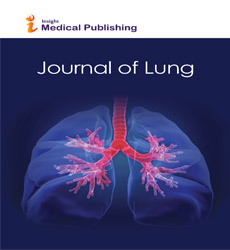Editorial Note on Pulmonary Ventilation
Gustav A. Heresy*
1Department of Psychiatry and Behavioral Sciences, University of Virginia School of Medicine, Charlottesville, USA
- *Corresponding Author:
- Gustav A. Heresy Department of Psychiatry and Behavioral Sciences, University of Virginia School of Medicine, Charlottesville, USA E-mail: heresig12@ccf.org
Received Date: June 01, 2021; Accepted Date: June 16, 2021; Published Date: June 23, 2021
Citation: Heresy GA (2021) Editorial Note on Pulmonary Ventilation. J Lung Vol. 2 No.4: e002
Editorial Note
The discovery of pulmonary circulation was one of the first major breakthroughs in the science of pulmonology. Originally, blood reaching the right side of the heart from all parts of the body to pass through the septum into the left side of the heart to be oxygenated, Blood must pass through the pulmonary artery, the lungs, and back into the heart to be pumped around the body.
Phthisiology is a discipline dedicated to the diagnosis, treatment, and study of TB of the lungs. When the field did start to develop, significant breakthroughs were made that linked the respiratory system to the measurement of arterial blood gases, bringing an increasing number of physicians and researchers to the area. Although modest operations may be performed by pulmonologists, surgery of the respiratory tract is usually conducted by cardiothoracic surgery or thoracic surgery specialists. When dealing with patients who require artificial breathing, pulmonology is intimately tied to critical care medicine. As a result, many pulmonologists are qualified to practice both pulmonary and critical care medicine. Fellowship programmes exist that allow physicians to earn board certification in both pulmonary and critical care medicine at the same time. Interventional pulmonology is a subspecialty of pulmonary medicine that involves the use of bronchoscopy and pleuroscopy to treat a variety of lung diseases. Interventional pulmonology is becoming more well-known as a distinct medical specialty. Medication is the most essential treatment for most pulmonary illnesses, whether inhaled bronchodilators and steroids or taken orally antibiotics, leukotriene antagonists. Inhalers are commonly disease. In severe respiratory disease, oxygen therapy is frequently required emphysema and pulmonary fibrosis. If not cured, the patient may need mechanical ventilation.
Mechanical ventilation, also known as assisted ventilation or intermittent mandatory ventilation is a type of ventilation that is used to help people breathe more easily. Artificial ventilation, or IMV, is a medical term for mechanical devices that assist or replace natural breathing. A ventilator could be utilized, or a suitably qualified practitioner, such as an anesthesiologist, Registered Nurse, paramedic, or other first responder, could manually assist breathing by compressing a bag valve mask device. Oxygen therapy, often known as supplemental oxygen, is the use of oxygen as a medicinal treatment. Low blood oxygen, carbon monoxide poisoning, cluster headaches, and maintaining adequate oxygen when inhalation anesthetics are administered. People with chronically low oxygen levels, such as those suffering from severe COPD or cystic fibrosis, may benefit from long-term oxygen therapy. An oxygen mask, a nasal cannula, or a face mask can all be used to deliver oxygen. A bronchodilator, also known as a bronchiolitis, is a drug that dilates the bronchi and bronchioles, reducing respiratory airway resistance and boosting lung airflow. Bronchodilators can be found naturally in the body or as pharmaceuticals used to treat breathing problems, commonly in the form of inhalers. They are mainly beneficial in obstructive lung disease, the most prevalent of which being asthma and chronic obstructive pulmonary disease. They may be beneficial in the treatment of bronchiolitis and bronchiectasis. They are commonly recommended, although their effectiveness in restrictive lung disorders has yet to be demonstrated. Short-acting bronchodilators and long-acting bronchodilators are the two types of bronchodilators. Shortacting drugs provide relief from acute bronchoconstriction quickly, Long-acting bronchodilators aid in symptom management and prevention. Beta2-adrenergic agonists, both short- and long-acting, anticholinergic, and theophylline are the three types of prescription bronchodilators.
Open Access Journals
- Aquaculture & Veterinary Science
- Chemistry & Chemical Sciences
- Clinical Sciences
- Engineering
- General Science
- Genetics & Molecular Biology
- Health Care & Nursing
- Immunology & Microbiology
- Materials Science
- Mathematics & Physics
- Medical Sciences
- Neurology & Psychiatry
- Oncology & Cancer Science
- Pharmaceutical Sciences
